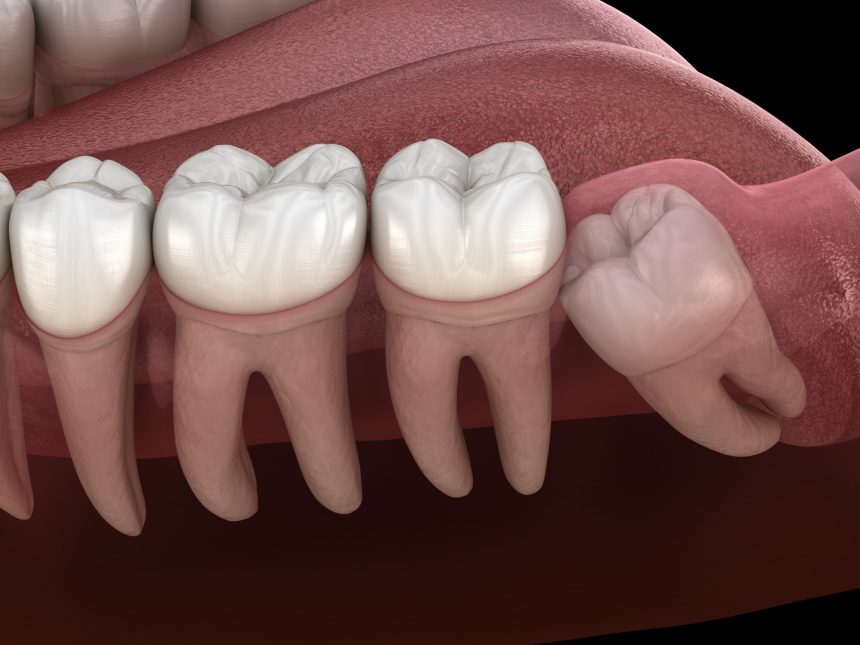Around 10 million wisdom teeth are extracted in America every year.
That’s a pretty high number when you consider that not all wisdom tooth impactions require the tooth to be removed. Unless you work in the dental industry, you probably don’t know much about the different types of wisdom teeth, but we all have them, so it’s time to get learning!
Not knowing about how your wisdom teeth work could lead to you jumping the gun and choosing drastic options to avoid minor toothache. Or you may suffer dire consequences of not getting a problematic tooth extracted.
Read on to learn about the different types of wisdom tooth impaction, how to identify them, and the best course of action for each.
1. Mesial Wisdom Tooth Impaction
The first and most common type of wisdom tooth problem is called a mesial impaction.
You can tell if you have a mesial impaction because the tooth partially erupts from the gum but is angled towards the front of the mouth.
Mesial impactions are common because our jaws have become too small to contain all our teeth as humans have evolved. Thus, these third molars get pushed through at an angle, trying to find space.
If you have a mesial wisdom tooth impaction, don’t worry. It’s common and often pain-free. If the eruption is at a severe angle, your dentist may recommend getting it removed; otherwise, mesial wisdom tooth impactions are harmless unless they’re causing pain.
However, it’s important to stay under review by a dentist if you have mesial impaction. There is a risk of wisdom teeth decaying under the gum; this can cause infection and the surrounding teeth to deteriorate.
You should get regular dental x-rays to ensure this is not happening and if the dentist does advise an extraction, listen to them.
2. Distal Wisdom Tooth Impaction
Distal impactions are the opposite of mesial impactions and also the rarest. In a distal impaction, the tooth is angled towards the back of the mouth. Sometimes, they stay fully impacted, but they can partially erupt and put pressure on the root of the tooth in front.
These impactions don’t always require extraction; it’s best to wait and see how severe the angle of the tooth is. If the angle is close to 90 degrees, the tooth can impact the jawbone and cause further complications.
If you need an extraction, your dentist will advise whether intravenous sedation, local or general anesthetic will be most appropriate.
Distal impactions can be extremely painful, but only if the tooth puts pressure on certain parts of the surrounding teeth. Therefore, some distal impactions are relatively pain-free. However, if your dentist still advises you to get wisdom teeth removed, it’s likely that they are other risks of infection or complications if not removed.
3. Vertical Wisdom Tooth Impaction
If you were to choose an impaction to have, it’d be a vertical one. This is the most simple impaction of all – it’s when the tooth is correctly aligned in the gum but has not erupted into the mouth.
The wisdom tooth sits in the correct position and usually fits into the mouth without issue when it does erupt. Vertical impactions don’t have symptoms until the tooth begins to come through, so you’d only notice it if you went for dental X-rays.
If you’ve got a small jaw, then a vertical impaction can take up too much space within your mouth; this causes crowding and shifting of your other teeth. If you notice your teeth shifting places, you should contact your dentist for x-rays to see if you have a vertical impaction.
Overcrowding is the most common reason for extracting a distal impaction. Rarely, a dentist will advise you to get a vertical impaction removed if it’s causing pressure on the jawbone or other teeth.
If you need an extraction, it can be done quickly under a local anesthetic. Intravenous sedation can be used but is only necessary if you’re a nervous patient.
4. Horizontal Wisdom Tooth Impaction
A horizontal wisdom tooth impaction is where the tooth lies on its side underneath the gums. When the tooth tries to erupt, it pushes onto the other teeth next to it, causing intense pain.
Extraction is nearly always recommended for a horizontal impaction because it can cause damage to your other teeth and severe pain. The most common symptoms you’ll notice are jaw pain, red or swollen gums, jaw swelling, and difficulty opening your mouth.
Horizontal impactions are more challenging to extract, but they can still be done under a local anesthetic. Many dentists may also advise intravenous sedation or a general anesthetic to help keep you still during the procedure.
If you choose to have sedation, you’ll be awake but have little to no memory of the procedure. Under a general anesthetic, you’ll be able to go home the same day but will be asleep during the procedure.
All You Need to Know About Wisdom Tooth Impactions
That’s the in-depth guide to wisdom tooth impactions, identifying them, and the most appropriate treatment options.
Although not all wisdom teeth need to be removed, all impactions need close monitoring by a dentist to check they don’t worsen or decay under the gum. If you’re considering a wisdom tooth removal, make sure to listen to what the dentist has to say; they see impactions every day and know the risks!
Did you find this article helpful? If so, make sure to check out our other posts for more informative health and lifestyle topics.














